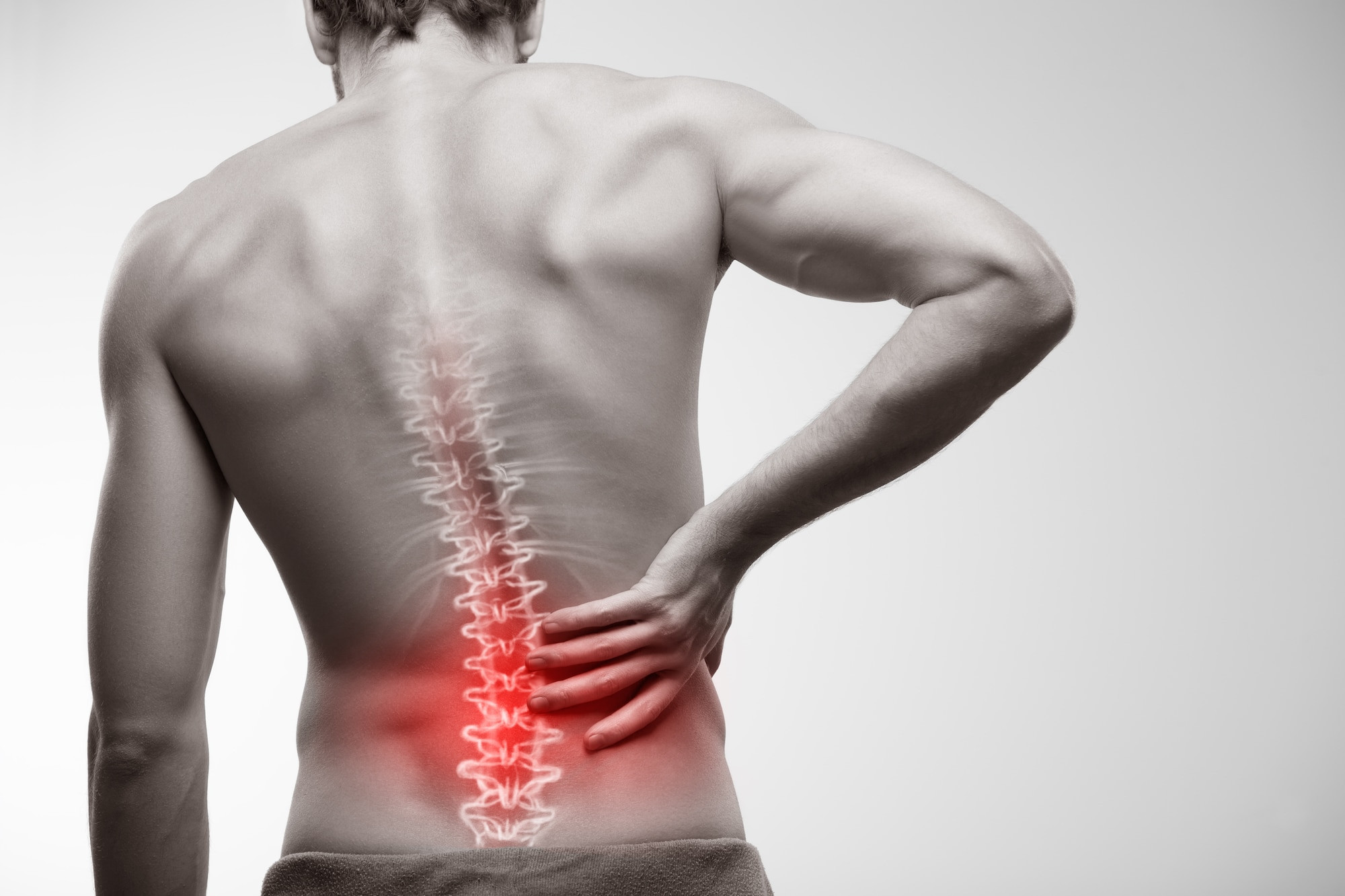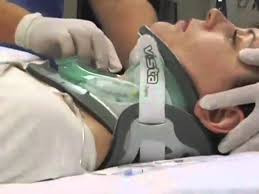Definisi
Trauma medula spinalis adalah kerusakan pada sumsum tulang belakang atau serabut saraf yang membentuk ekor kuda (cauda equina). Di seluruh dunia, terdapat sekitar 250.000 hingga 500.000 orang yang mengalami cedera pada medula spinalis setiap tahunnya. Cedera medula spinalis tidak hanya disebabkan oleh trauma, tetapi juga oleh kondisi medis seperti adanya peradangan sendi. Namun, artikel ini hanya akan membahas cedera medula spinalis yang disebabkan oleh trauma. Cedera pada medula spinalis, baik disebabkan trauma atau tidak, seringkali mengakibatkan kecacatan permanen.
Penyebab
Medula spinalis atau sumsum tulang belakang adalah bagian dari sistem saraf pusat, dengan bagian lainnya adalah otak. Sumsum tulang belakang disusun oleh jaringan lunak yang dilindungi oleh tulang belakang, dan berjalan dari dasar otak hingga pinggang. Ujung sumsum tulang belakang berbentuk seperti kerucut, sehingga dinamakan conus medullaris. Untuk mempersarafi bagian bawah tubuh (dari pinggang hingga jari-jari kaki), terdapat serabut saraf terusan yang berjalan melanjutkan sumsum tulang belakang. Saraf-saraf ini berkelompok seperti ekor kuda, sehingga dinamakan cauda equina. Dari sumsum tulang belakang, akan keluar saraf-saraf untuk menghubungkan otak dengan bagian-bagian tubuh. Otak dapat memberikan sinyal motorik bagi tubuh untuk melakukan gerakan, sementara tubuh dapat memberikan sinyal sensorik berupa informasi mengenai suhu, sentuhan, nyeri, dan posisi tubuh kepada otak.
Trauma medula spinalis pada umumnya disebabkan oleh tabrakan kendaraan bermotor, jatuh, kekerasan fisik, dan olahraga. Dari seluruh penyebab tersebut, penyebab tersering adalah tabrakan kendaraan bermotor, yang pada umumnya terjadi pada usia 16-30 tahun. Pada usia lanjut (di atas 65 tahun), penyebab trauma medula spinalis tersering adalah jatuh. Penyebab-penyebab ini merusak struktur tulang belakang atau bahkan sumsum tulang belakang sendiri. Trauma dapat terjadi akibat benturan dengan benda tumpul dan luka tusuk oleh pisau atau luka tembak oleh peluru.
Faktor Risiko
Faktor risiko trauma medula spinalis terkait dengan penyebabnya. Laki-laki 4 kali lebih sering mengalami trauma, karena lebih banyak mengendarai kendaraan bermotor dan melakukan olahraga yang ekstrem, seperti menyelam di air yang terlalu dangkal, serta berolahraga tanpa alat pengaman. Selain itu, aktivitas berisiko tinggi tersebut banyak dilakukan oleh remaja hingga dewasa muda, sehingga trauma medula spinalis paling banyak terjadi pada usia 16-30 tahun. Penggunaan alkohol juga terkait dengan 25% trauma medula spinalis.
Angka kejadian trauma medula spinalis meningkat pada usia di atas 65 tahun, karena peningkatan risiko jatuh pada usia ini. Selain itu, kondisi medis seperti osteoporosis (tulang keropos) dapat meningkatkan risiko cedera medula spinalis akibat trauma ringan.
Gejala
Gejala trauma medula spinalis sangat tergantung pada posisi dan tingkat keparahan cedera pada medula spinalis. Posisi cedera pada medula spinalis menentukan posisi awal gejala dirasakan pada tubuh; seluruh bagian tubuh yang diatur oleh bagian medula spinalis yang berada di bawah posisi cedera akan mengalami gejala serupa.
Berdasarkan keparahan cedera, trauma medula spinalis terbagi atas:
- Komplit. Pada cedera ini, seluruh medula spinalis pada posisi tertentu mengalami cedera. Akibatnya, seluruh sensasi seperti suhu, tekanan, perabaan, nyeri, serta posisi tubuh, menjadi hilang. Tidak hanya itu, otot-otot yang diatur oleh medula spinalis pada posisi tersebut dan di bawahnya akan mengalami kelumpuhan.
- Inkomplit. Pada cedera ini, hanya sebagian medula spinalis pada posisi tertentu yang mengalami cedera. Gejala dapat berupa kelumpuhan, kehilangan sensasi, atau gabungan keduanya. Cedera inkomplit memiliki banyak variasi berdasarkan letak cederanya.
Selain itu, kelumpuhan akibat cedera medula spinalis terbagi atas:
- Tetraplegia. Secara harafiah, tetraplegia berarti kelumpuhan pada empat anggota gerak, yaitu kedua lengan dan kedua tungkai. Namun, kenyataannya, bagian yang terpengaruh bukan hanya anggota gerak, tetapi juga badan, perut, dan seluruh organ-organ di dalamnya. Biasanya, tetraplegia disebabkan oleh cedera medula spinalis yang terjadi pada daerah leher.
- Paraplegia. Paraplegia berarti kelumpuhan pada dua anggota gerak, yaitu kedua tungkai. Namun, bagian yang terpengaruh selain kedua tungkai sangat tergantung dari posisi cedera. Pada paraplegia, cedera medula spinalis dapat terjadi pada punggung bagian atas hingga pinggang. Jika cedera terjadi pada punggung bagian atas, otot-otot dan organ pada badan dan perut akan mengalami gejala seperti kesulitan bernapas dan batuk, serta gangguan seksual dan berkemih. Sementara itu, jika terjadi pada pinggang, gangguan seksual dan berkemih dapat terjadi selain paraplegia.
Pada keadaan yang lebih parah, trauma medula spinalis dapat menyebabkan tekanan darah rendah dan detak jantung menurun. Kondisi ini disebut sebagai syok neurogenik, yang terjadi akibat kehilangan kemampuan tubuh untuk menaikkan tekanan darah dan detak jantung.
Diagnosis
Diagnosis trauma medula spinalis dilakukan dengan melakukan pemeriksaan langsung dan pencitraan. Pemeriksaan langsung bertujuan untuk mengetahui posisi cedera pada saraf. Pemeriksaan yang dapat dilakukan adalah tanda vital seperti tekanan darah, denyut nadi, pernapasan, suhu, serta pemeriksaan fisik saraf. Pemeriksaan fisik saraf yang dapat dilakukan berupa pemeriksaan raba, penentuan posisi tubuh, serta melakukan gerakan.
Pencitraan berupa foto rontgen dan CT scan dapat dilakukan untuk mengetahui posisi kelainan tulang, seperti patah tulang. Sementara itu, pemeriksaan magnetic resonance imaging (MRI) dapat dilakukan untuk mencari kerusakan pada sumsum tulang belakang. MRI bisa dilakukan setelah keadaan penderita stabil.
Selain itu, pemeriksaan laboratorium juga dapat dilakukan. Pemeriksaan analisis gas darah (AGD) dapat dilakukan untuk mengetahui kecukupan oksigen di dalam jaringan. Pemeriksaan laktat berguna untuk mengetahui status metabolisme pada jaringan, terutama pada keadaan syok. Pemeriksaan darah lengkap berguna untuk mengetahui seberapa banyak darah yang hilang. Pemeriksaan urine berguna untuk mencari kemungkinan cedera sistem perkemihan.
Tata Laksana
Tata laksana trauma medula spinalis dimulai sebelum mencapai IGD terdekat. Jika Anda mencurigai adanya trauma pada daerah punggung pada orang lain, ada beberapa hal yang dapat Anda lakukan:
- Pastikan keadaan sekitar aman dan jangan pindahkan orang tersebut
- Hubungi fasilitas kesehatan dengan IGD terdekat
- Jaga agar orang tersebut tidak bergerak, karena pergerakan dapat memperparah cedera
- Tempatkan handuk tebal pada sisi kiri dan kanan leher untuk mencegah pergerakan leher terlalu banyak
- Jika mampu, hentikan perdarahan yang tampak dan tenangkan korban tanpa menggerakkan kepala atau lehernya
Setelah sampai di IGD, tata laksana awal akan meliputi pembebasan jalan napas dan pengamanan leher (airway), stabilisasi napas (breathing), dan peredaran darah (circulation). Intubasi atau pemasangan selang napas dapat dilakukan jika korban kesulitan bernapas. Pemasangan infus dapat dilakukan sebagai usaha untuk membuat tekanan darah stabil. Pemasangan selang makan atau nasogastric tube (NGT) dapat dilakukan untuk mempermudah makan, karena korban dapat memiliki kesulitan menelan atau bernapas. Pemasangan kateter untuk kencing juga dapat dilakukan. Pemberian obat-obatan dapat berguna untuk menaikkan tekanan darah, mengurangi nyeri, dan mencegah muntah. Selain itu, pasien akan ditengkurapkan beberapa jam sekali untuk mencegah luka pada punggung akibat tekanan (ulkus dekubitus).
Pembedahan dapat dilakukan untuk stabilisasi tulang belakang, mencegah nyeri dan kelainan bentuk, serta menghilangkan tekanan akibat tekanan pada saraf, gumpalan darah, atau benda asing. Setelah beberapa lama, pasien akan menjalani rehabilitasi. Rehabilitasi bertujuan untuk melatih pasien menggerakkan anggota tubuh dan melakukan kegiatan sehari-hari seperti mandi, makan, buang air, dan sebagainya. Rehabilitasi dapat pula melibatkan psikiater atau psikolog karena sulitnya pulih dari kondisi tersebut.
Komplikasi
Komplikasi trauma medula spinalis terjadi akibat pasien tidak dapat bergerak. Komplikasi ini dapat berupa infeksi saluran kemih, ulkus dekubitus, sumbatan pada pembuluh darah dalam, serta nyeri kronis. Tidak hanya itu, infeksi paru (pneumonia) dapat terjadi akibat posisi diam terlalu lama. Infeksi tersebut dapat menyebabkan bakteri masuk ke dalam peredaran darah, sehingga terjadi sepsis. Kondisi-kondisi ini, jika tidak ditangani, dapat menyebabkan kematian.
Komplikasi lainnya terkait dengan bagian tubuh yang terpengaruh, misalnya berupa kesulitan buang air kecil dan besar, gangguan seksual, pengecilan otot, serta osteoporosis. Komplikasi umum ini menyebabkan kecacatan permanen dan ketergantungan berat.
Pencegahan
Pencegahan trauma medula spinalis dapat dilakukan dengan berkendara secara hati-hati dan menggunakan sabuk pengaman saat mengendarai mobil. Pencegahan jatuh dapat dilakukan dengan memasang pegangan tangan untuk tangga, memasang matras kasar pada kamar mandi, serta memagari tangga dan teralis jendela untuk mencegah anak kecil menaiki tangga atau jendela. Selain itu, jangan menyetir dalam keadaan mabuk. Jika hendak terjun ke air, pastikan kedalaman air minimal 3,7 meter sebelum melakukannya. Ketika hendak melakukan olahraga ekstrem, gunakan pengaman yang diperlukan dan patuhi aturan keselamatan.
Kapan harus ke dokter?
Segeralah ke dokter apabila Anda atau orang di sekitar Anda mengalami cedera pada leher atau punggung. Setiap jatuh atau cedera yang melibatkan daerah tersebut sebaiknya dianggap sebagai trauma medula spinalis sampai terbukti bukan, karena:
- Cedera medula spinalis tidak selalu tampak secara langsung
- Rasa baal dan kelumpuhan dapat terjadi langsung atau bertahap
- Waktu antara terjadinya cedera dan penanganan sangat kritis untuk menentukan pemulihan dan komplikasi. Semakin cepat ditangani, pemulihan akan semakin baik dan komplikasi akan semakin rendah
Untuk informasi seputar penyakit lainnya, silakan kunjungi tautan ini!
- dr Hanifa Rahma
Bennett, J., Das, J., & Emmady, P. (2021). Spinal Cord Injuries. Retrieved 12 December 2021, from https://www.ncbi.nlm.nih.gov/books/NBK560721/
Chin, L. (2021). Spinal Cord Injuries: Practice Essentials, Background, Anatomy. Retrieved 12 December 2021, from https://emedicine.medscape.com/article/793582-overview#showall
Spinal cord injury - Symptoms and causes (2021). Retrieved 12 December 2021, from https://www.mayoclinic.org/diseases-conditions/spinal-cord-injury/symptoms-causes/syc-20377890












